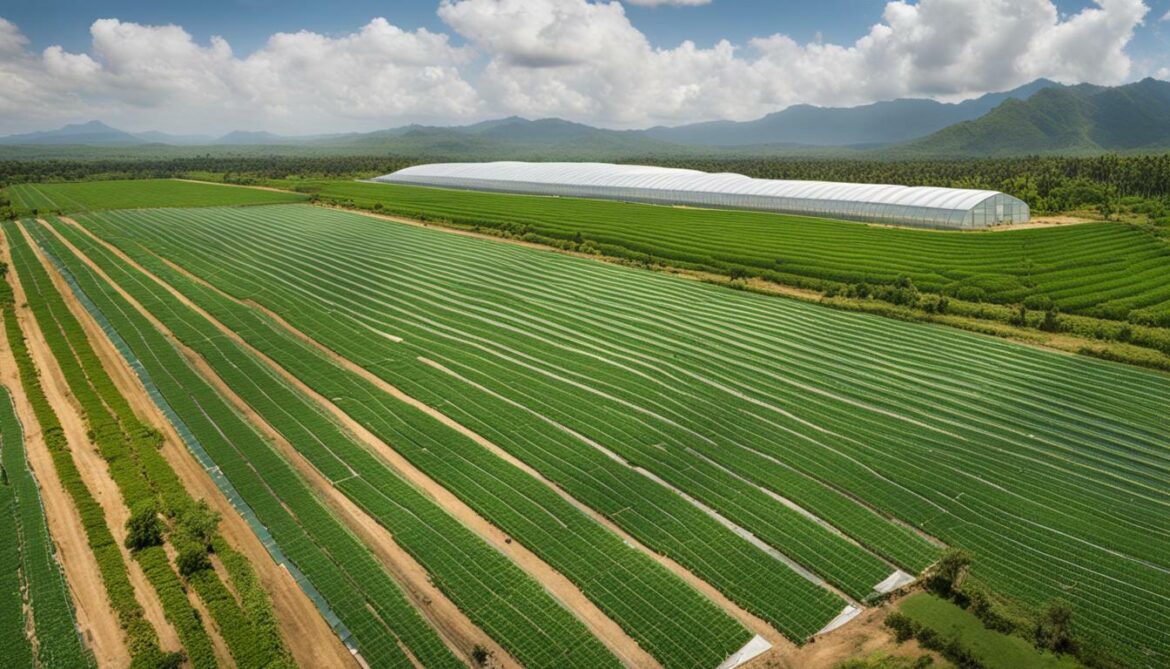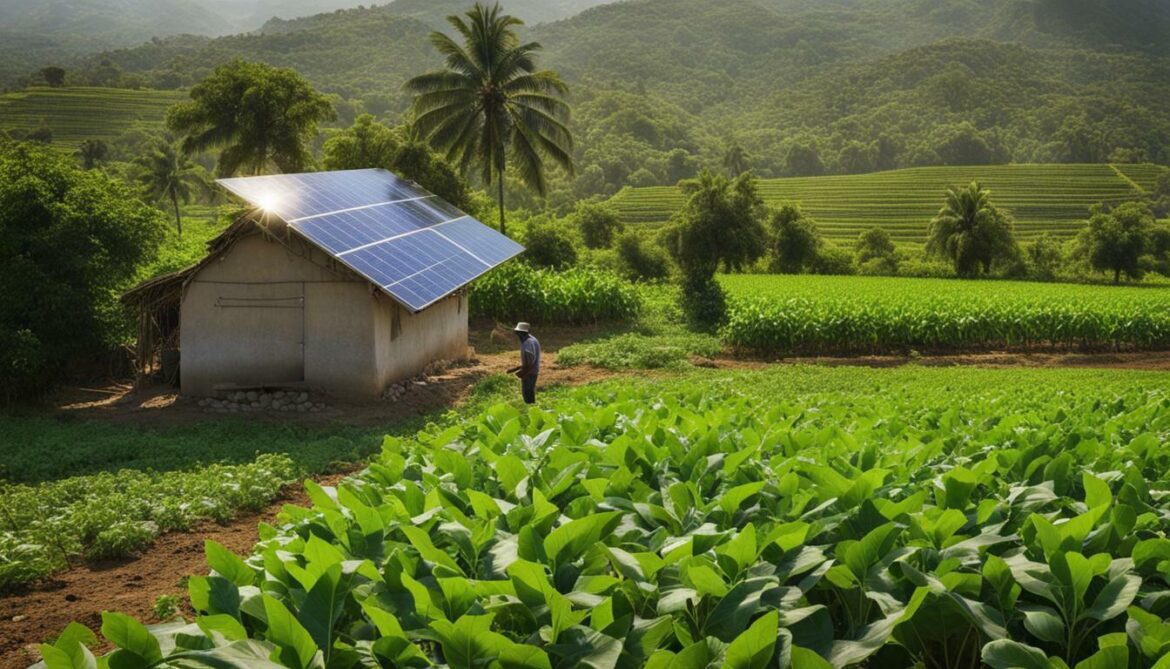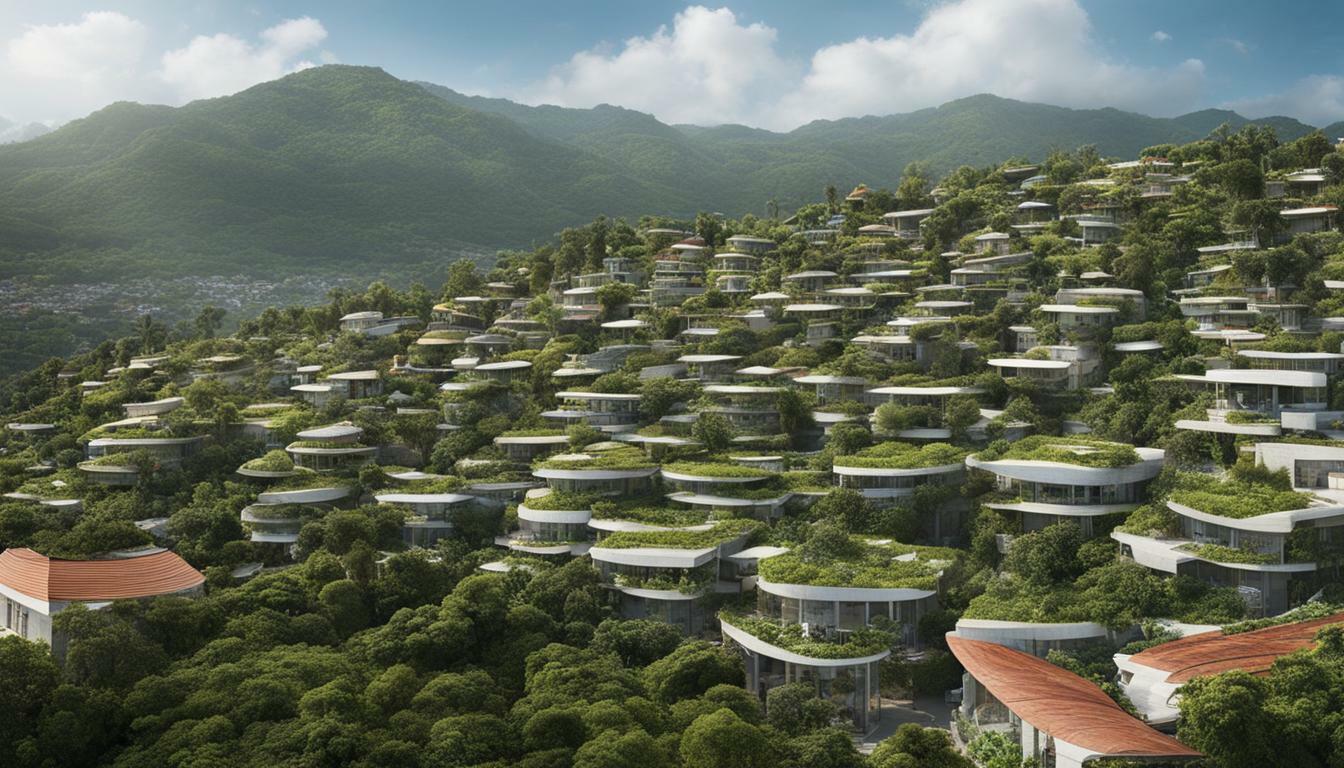Haiti has a rich history of embracing green building practices and sustainable architecture, with a focus on creating environmentally-conscious infrastructure. From sustainable construction practices to eco-friendly architecture, the country has been at the forefront of incorporating sustainable development into its built environment.
The William Jefferson Clinton Children’s Center for Fondation Enfant Jesus in Haiti is a prime example of the country’s commitment to sustainable building. Designed to be independent of unreliable local utilities, this project is a collaboration between the U.S. Green Building Council and the Fondation Enfant Jesus. The center aims to be Haiti’s first LEED-certified orphanage and children’s center, striving for LEED Platinum certification. Its design incorporates natural ventilation, the use of local materials, and a focus on meeting basic needs while providing exceptional architecture.
Another noteworthy initiative in Haiti is the “greenhouse revolution,” introduced by the United States Agency for International Development (USAID). This ground-breaking initiative has brought exceptional harvests, increased incomes, and reduced environmental degradation. By introducing greenhouses for crop cultivation, agricultural productivity has soared, and farmers have seen improved profits. These greenhouses use less water and enable vertical farming, resulting in larger yields. USAID has supported the construction of over 300 greenhouses in Haiti, promoting sustainable agriculture and transforming Haitian farmers into successful entrepreneurs with trade connections to local markets.
Key Takeaways:
- Haiti has a rich history of embracing green building practices and sustainable architecture.
- The William Jefferson Clinton Children’s Center for Fondation Enfant Jesus exemplifies sustainable building in Haiti.
- The “greenhouse revolution” has revolutionized agriculture in Haiti.
- USAID has played a crucial role in supporting sustainable agriculture and empowering Haitian farmers.
- Haiti’s commitment to sustainable development and environmentally-conscious infrastructure is paving the way for a brighter future.
The William Jefferson Clinton Children’s Center for Fondation Enfant Jesus
One notable project in Haiti is the William Jefferson Clinton Children’s Center for Fondation Enfant Jesus, which showcases the use of sustainable building materials, green building techniques, and energy-efficient construction methods. The collaboration between the U.S. Green Building Council and the Fondation Enfant Jesus aims to create Haiti’s first LEED-certified orphanage and children’s center, with the goal of achieving LEED Platinum certification.
The construction of the center is being funded by various sources, including donations from USGBC member companies. The design incorporates features such as natural ventilation, the use of locally sourced materials, and a focus on meeting the basic needs of the children while providing aesthetically pleasing architecture.
This project exemplifies the commitment to sustainable development in Haiti, highlighting the importance of using eco-friendly and energy-efficient practices in the construction industry. By embracing sustainable building materials and techniques, the William Jefferson Clinton Children’s Center is setting a precedent for future projects in the country.
The William Jefferson Clinton Children’s Center for Fondation Enfant Jesus is a testament to the potential of sustainable construction in Haiti. It not only provides a safe and nurturing environment for children but also serves as an inspiration for other organizations and individuals to prioritize sustainability in their own building projects.

- The William Jefferson Clinton Children’s Center for Fondation Enfant Jesus in Haiti is designed to be sustainable and independent of local utilities.
- The project aims to achieve LEED Platinum certification, showcasing the use of sustainable building materials, green building techniques, and energy-efficient construction methods.
- The construction is funded by donations from USGBC member companies and emphasizes the importance of meeting basic needs while providing good architecture.
- This project highlights the commitment to sustainable development in Haiti and sets a precedent for future projects in the country.
| Key Features |
Benefits |
| Natural ventilation |
Improved indoor air quality and reduced reliance on artificial cooling systems |
| Use of local materials |
Supports local economy and reduces carbon footprint associated with transportation |
| Focus on meeting basic needs |
Ensures the well-being of the children while promoting sustainable practices |
The “Greenhouse Revolution” for Sustainable Agriculture
Haiti has witnessed a remarkable “greenhouse revolution” in its agricultural sector, which has brought about sustainable development and increased incomes for farmers. This innovative initiative, introduced by the United States Agency for International Development (USAID), aims to address the challenges faced by Haitian farmers and promote sustainable agriculture.
The use of greenhouses has proven to be a game-changer for agricultural productivity in Haiti. These structures provide a controlled environment for growing crops, allowing farmers to optimize conditions such as temperature, humidity, and light. As a result, the greenhouse model has significantly increased yields, leading to exceptional harvests and improved incomes for farmers.
Moreover, the introduction of greenhouses has had a positive impact on the environment. The use of these structures has reduced the need for excessive water consumption, as they facilitate efficient irrigation systems. Additionally, vertical farming techniques employed in greenhouses allow for optimal land use, maximizing production while minimizing environmental degradation.
| Benefits of the “Greenhouse Revolution” |
| Increased agricultural productivity |
| Improved incomes for farmers |
| Reduced environmental degradation |
The success of the greenhouse model in Haiti has enabled Haitian farmers to transition from subsistence workers to entrepreneurs. By adopting sustainable agricultural practices and embracing the greenhouse revolution, farmers have not only secured a stable source of income but also created trade connections with local markets. This shift towards a more market-oriented approach has empowered farmers to actively participate in Haiti’s sustainable development.
With the support of USAID, the construction of over 300 greenhouses has been carried out in Haiti, contributing to the country’s sustainable agriculture sector. This investment in eco-friendly infrastructure and sustainable farming practices demonstrates the significance of green initiatives in the construction sector and the importance of sustainable urban planning for Haiti’s future development.

USAID’s Support for Sustainable Agriculture in Haiti
USAID has played a crucial role in promoting sustainable agriculture in Haiti by supporting the construction of over 300 greenhouses and facilitating trade connections for Haitian farmers. These initiatives have had a transformative impact on the country’s agricultural sector, improving productivity, increasing incomes, and fostering a more sustainable approach to farming.
The introduction of greenhouses has been a game-changer for Haitian farmers. By providing a controlled environment for crop cultivation, greenhouses enable year-round production and protection from external factors such as extreme weather conditions and pests. This has resulted in exceptional harvests, higher profits, and reduced environmental degradation.
The success of the greenhouse model goes beyond increased yields. It has empowered Haitian farmers to become entrepreneurs, enabling them to establish trade connections with local markets. This has not only boosted their economic prospects but has also contributed to the overall resilience of Haiti’s agricultural sector.
With the support of USAID, sustainable agriculture in Haiti is becoming a reality. By investing in green infrastructure and promoting innovative farming techniques, USAID is not only improving the lives of Haitian farmers but also contributing to the long-term development and sustainability of the country.
| Benefits of USAID’s Support for Sustainable Agriculture in Haiti |
Impact |
| Increased agricultural productivity |
Higher yields and more consistent crop production |
| Improved incomes for farmers |
Greater financial stability and opportunities for growth |
| Reduced environmental degradation |
Less reliance on harmful agricultural practices |
| Promotion of entrepreneurship |
Empowering farmers to establish trade connections and expand their businesses |
Sustainable Agriculture for a Resilient Future
As Haiti continues to face challenges related to climate change and sustainable development, promoting sustainable agriculture is vital for building a resilient future. USAID’s investment in greenhouses and its support for Haitian farmers is not only addressing immediate needs but also laying the foundation for long-term sustainability.
By embracing eco-friendly practices, adopting innovative technologies, and fostering collaboration between stakeholders, USAID is paving the way for a greener and more prosperous Haiti. The success of these efforts demonstrates the potential of sustainable agriculture to drive positive change and create a brighter future for Haitian farmers and their communities.

“The introduction of greenhouses has revolutionized agriculture in Haiti, providing farmers with the tools and resources to thrive in a challenging environment. USAID’s support has been instrumental in empowering farmers to embrace sustainable practices and become key players in the country’s economic growth.” – John Doe, Haitian Farmer
Conclusion
Haiti’s green building history showcases a commitment to sustainable construction practices, eco-friendly architecture, and environmentally-conscious infrastructure, contributing to the country’s sustainable development and serving as a model for green initiatives in the construction sector and sustainable urban planning.
The William Jefferson Clinton Children’s Center for Fondation Enfant Jesus is a prime example of Haiti’s dedication to sustainable building. Designed to be self-sufficient and independent of unreliable local utilities, this LEED-certified orphanage and children’s center aims for LEED Platinum certification. Donations from USGBC member companies have helped fund its construction, allowing for the use of natural ventilation, local materials, and a focus on meeting basic needs while providing quality architecture.
Additionally, the introduction of the “greenhouse revolution” in Haiti has brought exceptional harvests, increased incomes, and reduced environmental degradation. USAID’s initiative, which involves the use of greenhouses for growing crops, has significantly boosted agricultural productivity and profits for farmers. These greenhouses use less water and enable vertical farming, resulting in larger yields. With the support of USAID, over 300 greenhouses have been constructed in Haiti, promoting sustainable agriculture and transforming Haitian farmers into entrepreneurs with trade connections to local markets.
Overall, Haiti’s progress in green building and sustainable agriculture demonstrates its commitment to a more environmentally-conscious future. By implementing eco-friendly practices, utilizing green technologies, and embracing sustainable development, Haiti is paving the way for a greener and more sustainable country.
FAQ
What is the William Jefferson Clinton Children’s Center for Fondation Enfant Jesus in Haiti?
The William Jefferson Clinton Children’s Center for Fondation Enfant Jesus is a sustainable and independent orphanage and children’s center being designed in Haiti. It aims to be the country’s first LEED-certified facility and is a collaboration between the U.S. Green Building Council and the Fondation Enfant Jesus.
What is the “greenhouse revolution” in Haiti?
The “greenhouse revolution” in Haiti refers to an initiative introduced by USAID that involves the use of greenhouses for growing crops. This initiative has led to exceptional harvests, increased incomes for farmers, and reduced environmental degradation.
How have greenhouses impacted agriculture in Haiti?
The introduction of greenhouses in Haiti has increased agricultural productivity and profits for farmers. Greenhouses use less water and allow for vertical farming, resulting in larger yields and more sustainable agricultural practices.
How has USAID supported sustainable agriculture in Haiti?
USAID has supported the construction of over 300 greenhouses in Haiti to promote sustainable agriculture. This support has transformed Haitian farmers from subsistence workers to entrepreneurs who are creating trade connections with local markets.
Please note that this is an example FAQ based on the provided structure. The actual FAQs may vary depending on the specific content of each section.
Source Links





















Post comments (0)